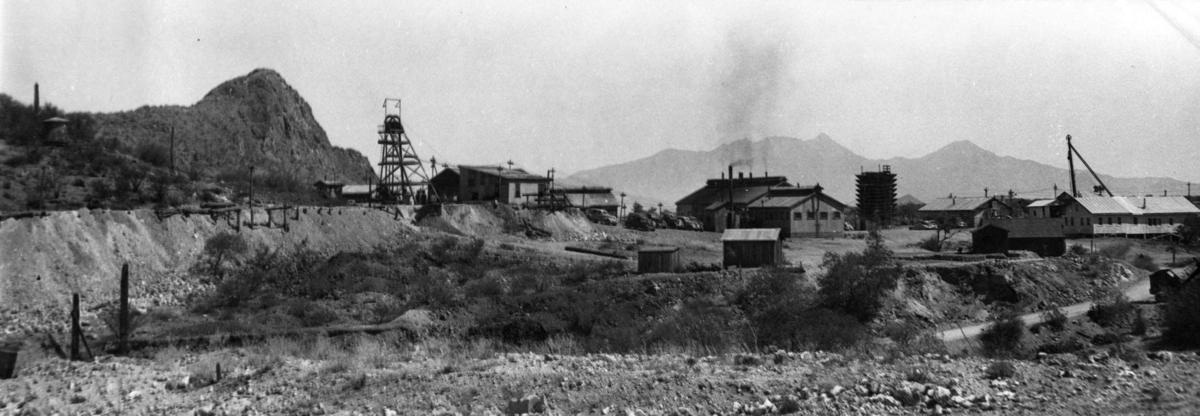The San Xavier Mine at Mineral Hill is one of the oldest working mines in the Sierrita Mountains.
The geology of the mine site consists of heavy faulting and fissures with a composition of limestone, quartzite and gypsum beds overlain in some areas by arkose and shale.
Located about 2½ miles north of the open-pit Mission Mine, it dates back to the Spanish who, with Indian converts, worked the area for silver and lead in the 18th and early 19th centuries.
Evidence of their work is found in the shallow shafts — arrastra remnants — and other primitive devices used to grind and smelt ores found in the Pima Mining District.
Further production and improvements were made under Col. C.P. Sykes of Calabasas, who acquired the mine in 1880, forming the San Xavier Mining and Smelting Co.
A small blast furnace was built along the Santa Cruz River about 9 miles south of Tucson to service the mine. However, the furnace proved ineffective.
The silver mining camp known as San Xavier — later renamed Olive after a nearby mine — operated over the course of the next decade, serving the nearby Michigan Maid, Olive, Richmond, and San Xavier mines.
The demonetization of silver in 1893 forced the mine and camp, including the local post office, to close. However, L. H. Manning, a Tucson banker, is credited with having made shipments of ore from the mine in 1897.
Operations resumed under the Empire Zinc Co. It worked the mine between 1912 through 1918 and shipped lead, zinc and silver from the site valued at $500,000 to the El Paso smelter.
The mine was again worked in 1943 by the Eagle Picher Co., with the onsite investment of a flotation mill credited with a daily output of 350 tons per day . By 1949, the mine was developed to the 900-foot level and was credited the prior year as the third-greatest producer of zinc and lead in Arizona.
Recorded figures of production include over 17 million pounds of zinc, 9 million pounds of lead, 1 million pounds of copper and 274,516 ounces of silver.
Ore was transported by truck to the company’s concentrator at Sahuarita, about seven miles to the east.
The nearby San Xavier Extension Mine developed by E.G. Bush prior to 1919 yielded 900 tons of ore, averaging 4 percent copper and 2 ounces of silver per ton.
It was later worked and improved by the Chilson Mines Co. with 6,000 tons of zinc, lead, copper and silver processed at custom mills and mine workings consisting of a vertical shaft over 500 feet deep with multiple levels and drifting.
Rising water forced the mine to pump out about 500 gallons per day.
The operation was later amalgamated as part of the San Xavier Mine.
Declining metal prices in 1952 forced the mines to close. By then, over 500,000 tons of lead and zinc ore had been mined and milled.
McFarland and Hullin- ger leased the property, mining an additional 32,000 tons of ore.
The property became an underground mining laboratory overseen by the University of Arizona’s department of mining and geological engineering in 1958.
Fully owned by the University of Arizona since 1975, the 90-acre property serves as an educational resource for the school’s mining and geological engineering students.
It is the only mining laboratory in the United States that includes a working vertical shaft.
Replete with two shop buildings and a headframe on the surface — along with a decline, mine adit and hoist — the mine is well-equipped to offer students a comprehensive work experience prior to entering into the mining workforce.





